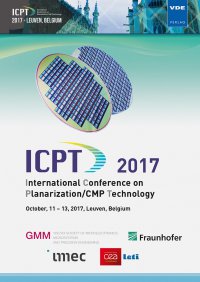CMP Process for (110)-Germanium Roughness Reduction
Konferenz: ICPT 2017 - International Conference on Planarization/CMP Technology
11.10.2017 - 13.10.2017 in Leuven, Belgium
Tagungsband: ICPT 2017
Seiten: 6Sprache: EnglischTyp: PDF
Persönliche VDE-Mitglieder erhalten auf diesen Artikel 10% Rabatt
Autoren:
Lisker, Marco; Krueger, Andreas; Lupina, Grzegorz; Yamamoto, Yuji; Mai, Andreas (IHP, Im Technologiepark 25, 15236 Frankfurt (Oder), Germany)
Inhalt:
Graphene has attracted a lot of attention for its unique physical properties. Synthesis of 200 mm wafer-scale single- crystalline monolayer graphene in Si production environment is indispensable for the usability of its pronounced potential. Beside the efforts to grow graphene from a fewer number of nuclei, the control of the graphene island orientation is also important for the elimination of grain boundaries. (110)-oriented Germanium is an appropriate substrate for that purpose. Here we focus on the post–epi optimization of Ge(110)/Si(110) substrates enabling growth and processing of graphene in 200 mm wafer Si technology environment. In our approach, a Gelayer was firstly epitaxial grown on the Si(110) substrate wafers with reduced pressure chemical vapor deposition. This layer has a thickness of 2000 nm to avoid the formation of SiC during the graphene epitaxy at high temperatures. The resulting surface of the Ge after the epitaxy has a rms-roughness of about 30 nm and thus not suitable for monolayer graphene synthesis. The CMP process shown here can reduce the roughness of germanium to a reasonable value which is required for the following atomic layer epitaxy process of graphene. In order to be able to polish the Germanium with SS12, it is advantageous to lower the pH-value of the slurry. To achieve this, a highly diluted hydrogen peroxide is added during the polishing step directly on the polishing pad. Keywords: Planarization, Chemical-mechanical Polishing of Ge, FEoL, Emerging technologies in CMP, graphene processing, CVD, AFM, optical profilometer


